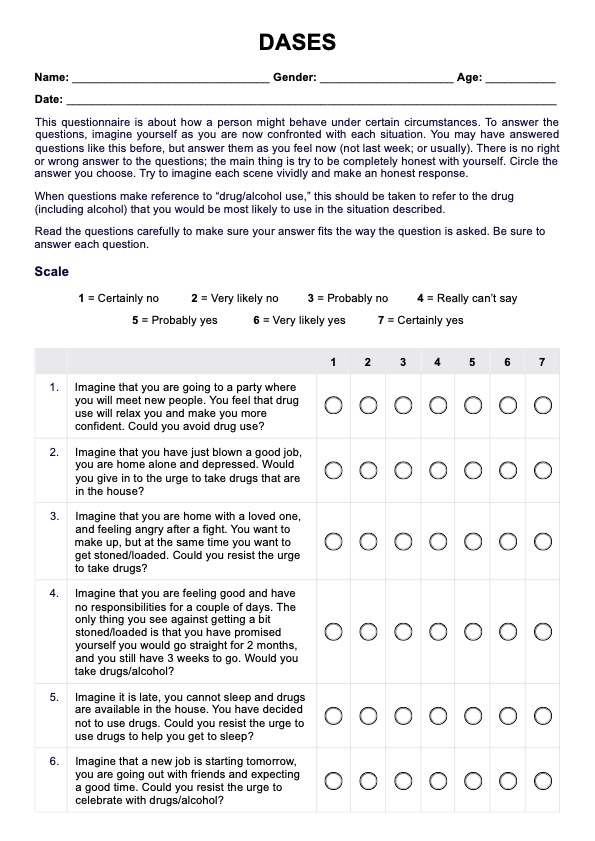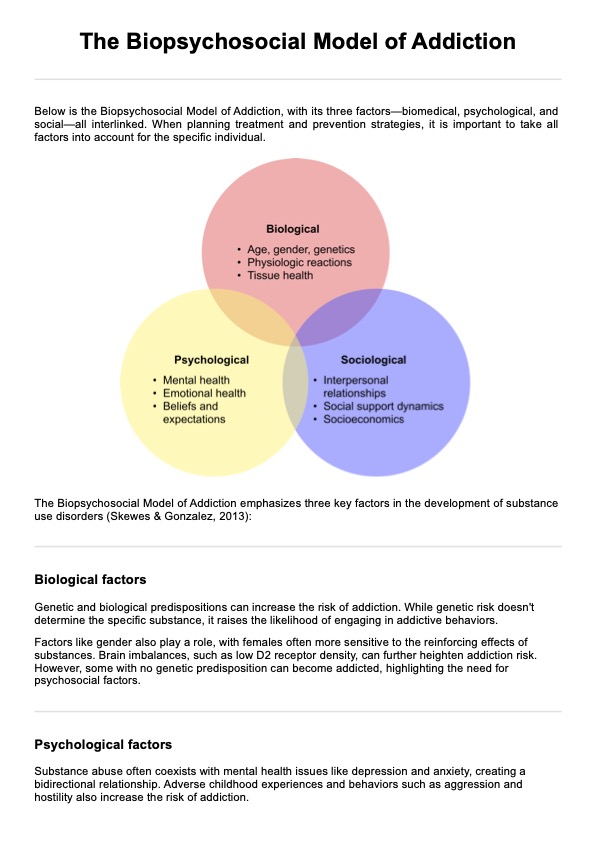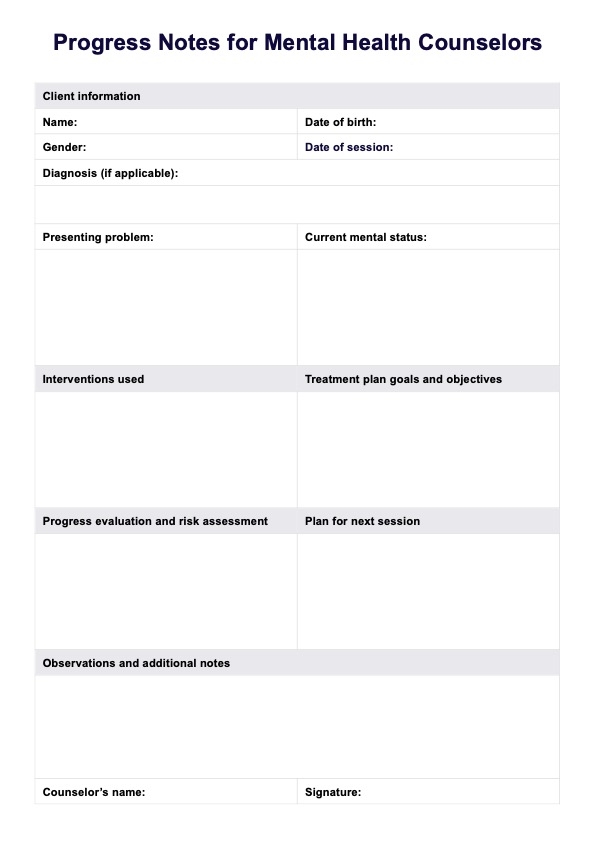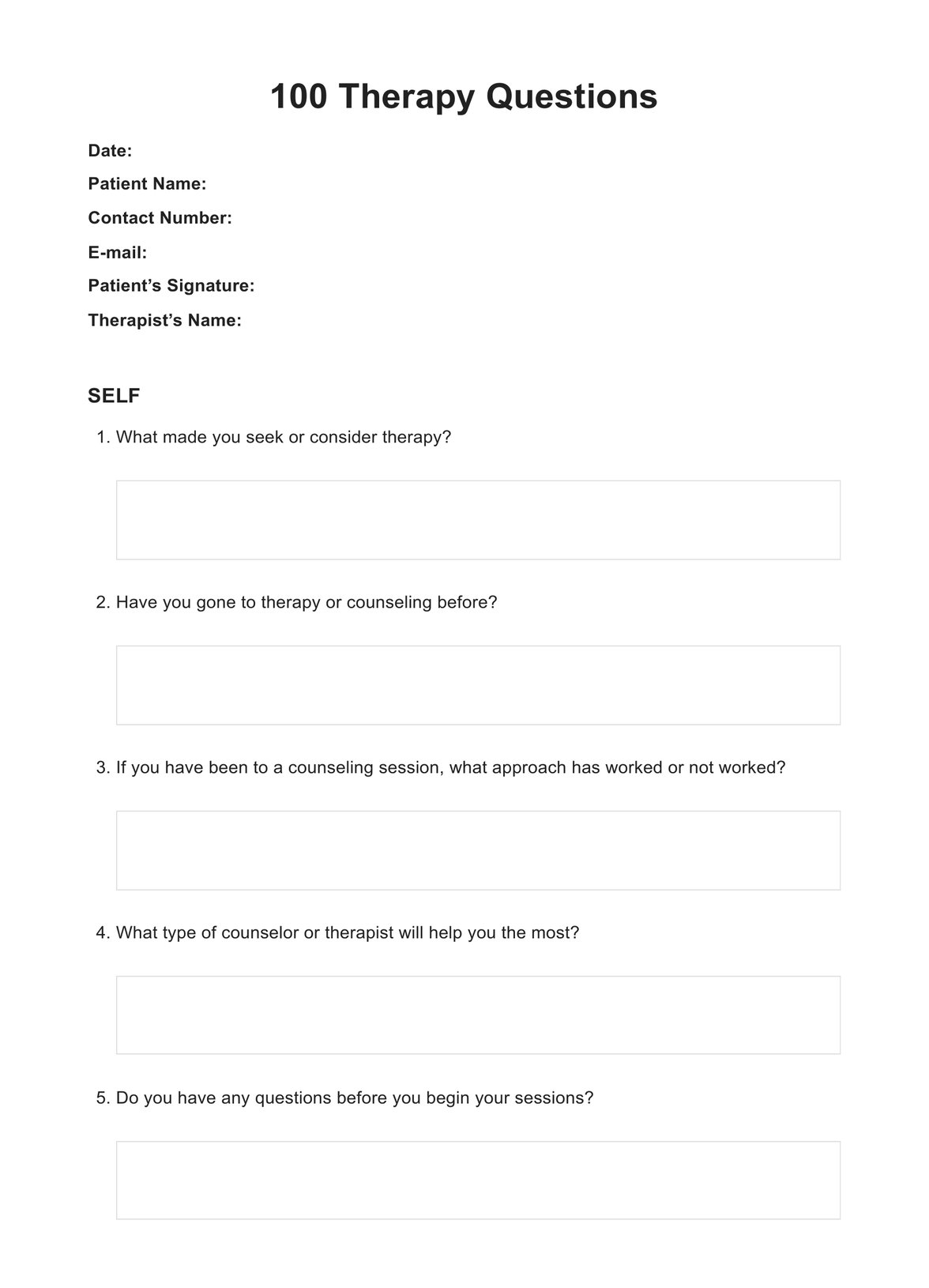COWS Assessment
Is your patient going through withdrawal? Make use of the COWS Assessment to assess the severity of their withdrawal and see what you can do to help their rehabilitation process go smoothly.


What is the COWS Assessment?
The (COWS Assessment for short) is an eleven-item questionnaire that was created by Donald R. Wesson, M.D. and Walter Ling M.D.
It aims to assess the severity level of a person’s opioid withdrawal during detoxification and determine how to proceed with the care plan to ensure their rehabilitation goes smoothly.
It’s also used to determine if a patient should be given buprenorphine, which is prescribed in order to help combat physical dependency to opioids. This is done on a case-by-case basis.
COWS Assessment Template
COWS Assessment Example
How to use the COWS Assessment
Observe the patient.
You, the clinician, will be using the COWS Assessment to evaluate a patient’s state of withdrawal. You will do so by observing the following:
- Resting Pulse Rate (beats per minute; to be measured after patients sit or lie down for 1 minute)
- Sweating (over the past ½ hour not accounted for by room temperature or patient activity)
- Restlessness (observation during the assessment)
- Pupil size
- Bone or joint aches (if patient was having pain previously, only the additional component attributed to opiates withdrawal is scored)
- Runny nose or tearing (not accounted for by cold -symptoms or allergies)
- GI Upset (over last ½ hour)
- Tremor (observation of outstretched hands)
- Yawning (observation during the assessment)
- Anxiety or irritability
- Gooseflesh skin
It is recommended that you monitor them with this assessment three to four times a day
Pick your answers based on your observations and calculate the COWS score.
You just need to pick one answer for each item. Each answer has a score assigned to it. After picking answers for all items, you need to get the total score.
This assessment has score ranges so you know which severity level your patient falls under:
- 5-12 = Mild
- 13-24 = Moderate
- 25-36 = Moderately severe
- 37+ = Severe withdrawal
Determine what goes into your rehabilitation plan for them.
After you totaled the scores and have seen which severity designation your patient falls under, you can create a care plan and see what goes into it in order to help your patient work through their opioid withdrawal and come out of it in good health. For improved client results and practice efficiency, utilize this care plan template.
One thing that may be included in your treatment plan is the use of buprenorphine, which is considered as an opioid partial agonist that’s used to help treat opioid use disorder. The patient may benefit from this since it can help with fighting withdrawal symptoms and opioid cravings because it diminishes the effects of physical dependency.
Of course, the inclusion of buprenorphine in your plan depends on the level of severity of the patient’s withdrawal. It’s only recommended if their scores fall under Mild or Moderate. If they fall under Moderately Severe or Severe Withdrawal, then you might want to hold off on including this to be on the safe side because buprenorphine has opioid effects.
When should the COWS Assessment be used?
The COWS Assessment is best used when a patient is (suspected of) undergoing withdrawal because of their opioid abuse, and it’s best to use it 3-4 times in a day to properly monitor the patient. As a healthcare practitioner, you should use your professional opinion and experience to determine whether this assessment will benefit a patient. Opioid withdrawal can be a gruelling and challenging experience, so be sure to remain sensitive and professional at all times. The COWS assessment is frequently used in inpatient environments (specifically, rehabilitation centers), where patients can access the resources they require to make a good recovery.
Who can use the COWS Assessment?
The COWS Assessment can be used by the following healthcare practitioners:
- Medical clinicians
- Physicians
- Doctors
- Nurses
- Any healthcare practitioner who works in rehabilitating opioid abusers.
More often than not, the COWS Assessment is used in rehabilitation facilities, especially during medically-assisted detoxification, but these can also be used in hospitals, specifically for patients who are given opioids to combat pain.
In the event that those types of patients, experience terrible withdrawal symptoms as a result of using prescribed pain-killing opioids, this assessment can be used to evaluate them and determine the next course of action to combat these symptoms.
.png)
What are the benefits of using the COWS Assessment?
It’s simple and easy to use.
The COWS Assessment is quite easy to use. You simply have to observe the patient going through withdrawal and select an answer for each prompt.
The scoring is clear and gives you something to work with.
The opioid withdrawal COWS score can be easily calculated because each item has an answer set and designated score. All you need to is to calculate the total score and see which COWS score range your patient falls under.
Each score range has a severity level designation. The designation will give you something to work with, especially when coming up with a treatment plan to help lessen the impact of their withdrawals.
It’s a good way to monitor the patient during the entire rehabilitation process.
The COWS Assessment isn’t a one-time, big-time thing. It’s best used numerous times during the entire rehabilitation/detoxification process of your patient. This is so you can track any consistencies or changes in their withdrawal symptoms, especially if they’re being medically-assisted (like the use of buprenorphine to help aid combat the withdrawal symptoms).
Commonly asked questions
The COWS Assessment is a useful tool that will help clinicians assess the rehabilitation patients they have who are experiencing withdrawal symptoms. This tool will help them assess the severity of their withdrawals and assist with determining how to care for their patients during detoxification.
Since you have to monitor your patient multiple times a day, using this assessment three to four times a day should help you see any consistencies in your patient’s withdrawal symptoms, as well as track any changes (whether they’re getting worse or if they are improving).
The reason for this is that buprenorphine has the side effects of an opioid, like sweating, tremors, palpitations, dry mouth, and more. While it can be used to help combat withdrawal symptoms since it can dimish the patient’s physical dependency on opioids, it might only make things worse if the patient’s withdrawal symptoms are severe. It’s always best to be on the safe side.


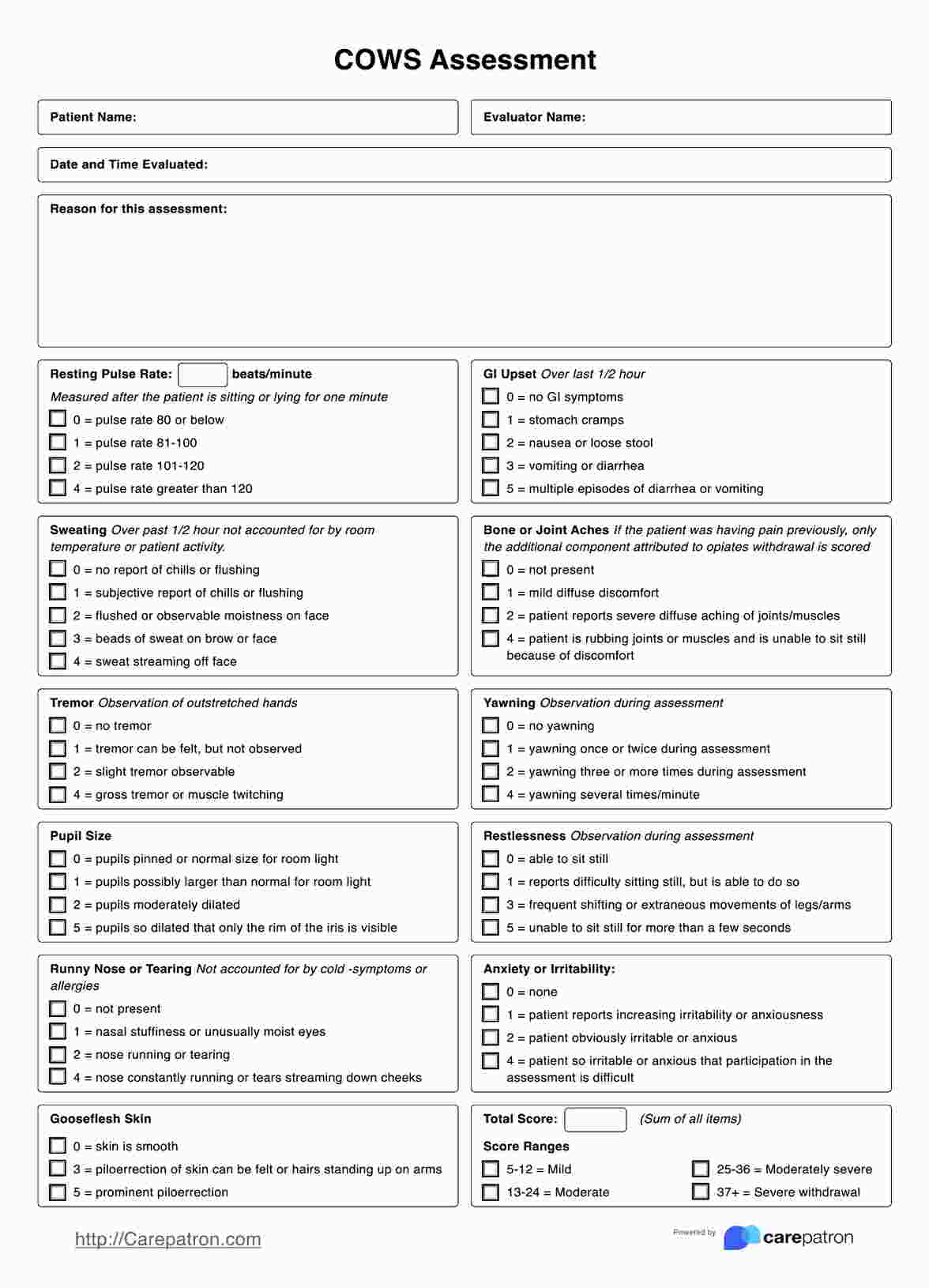
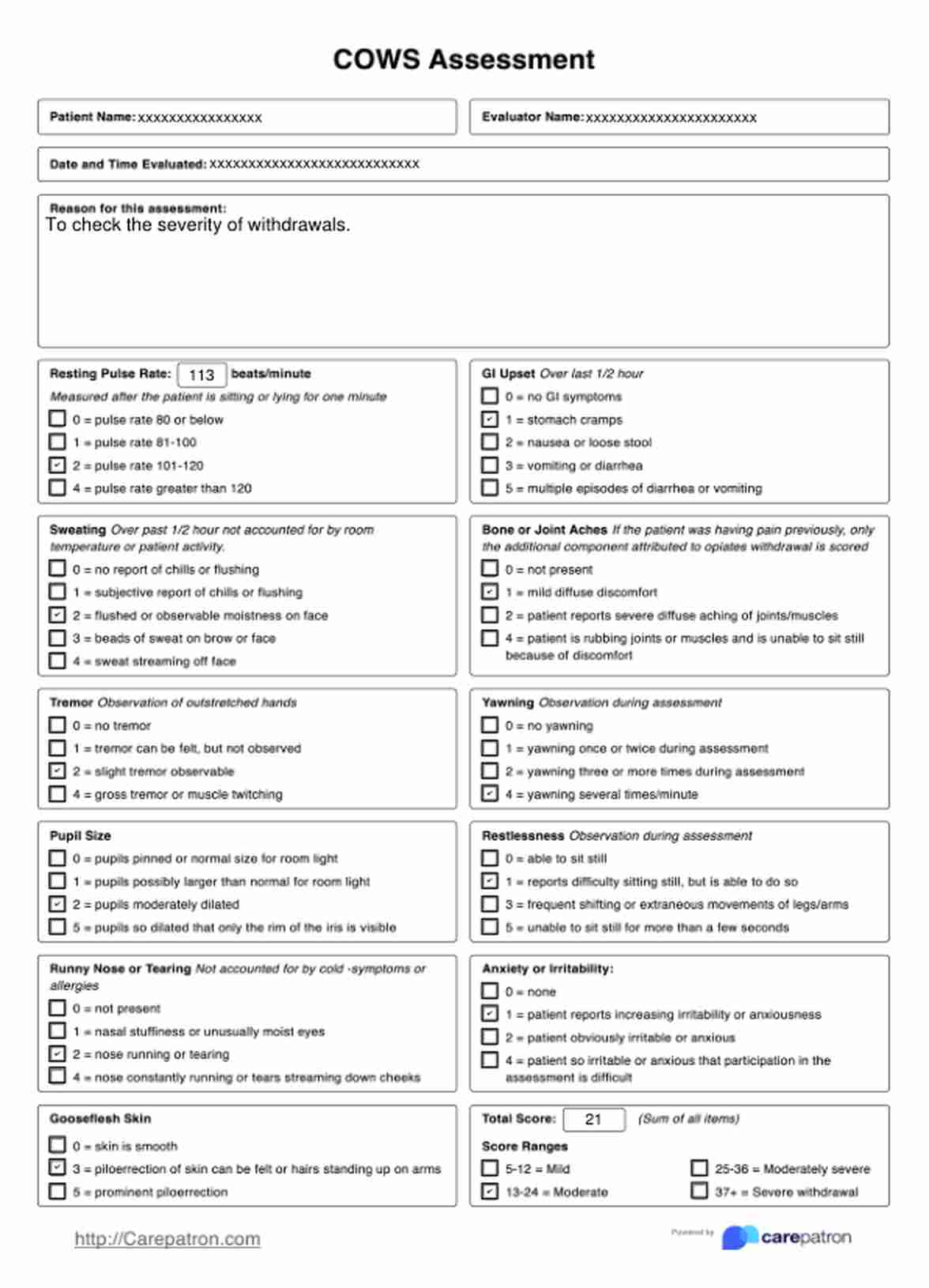














-template.jpg)


